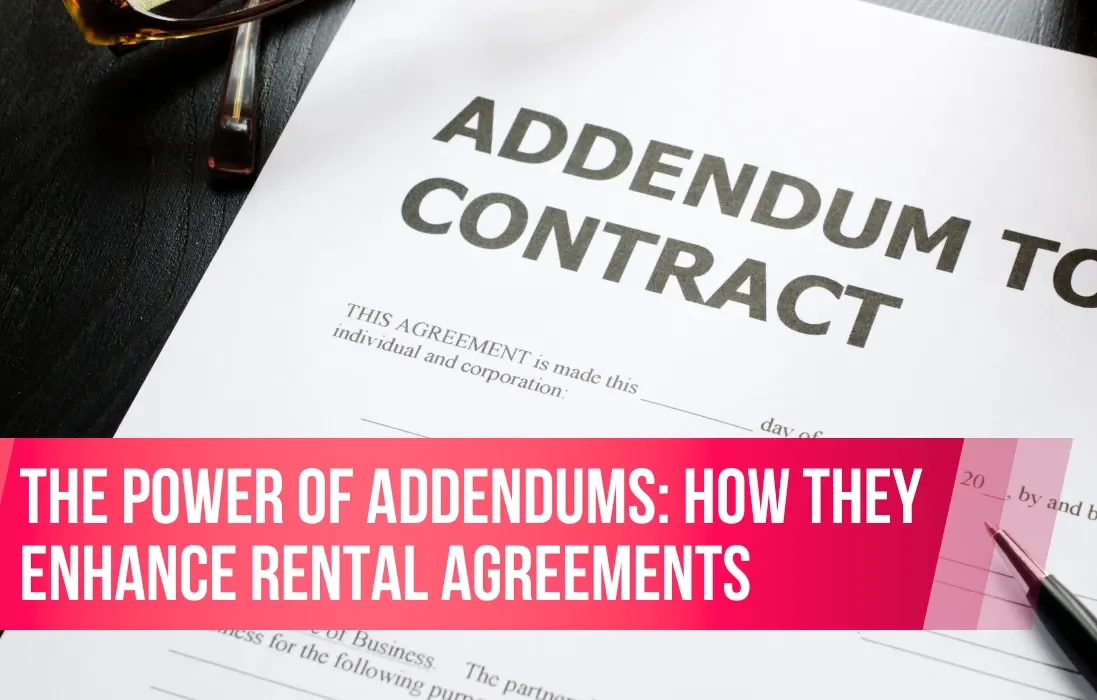Addendums are essential documents that enhance rental agreements by addressing specific situations or requirements. These additional terms provide clarity, set expectations, and protect both landlords and tenants. From pet policies to maintenance responsibilities, addendums allow landlords to customize their agreements to meet the unique needs of each rental property.
In this post, we’ll explore the role of addendums, how they can be used to improve rental agreements, and how leveraging technology like LoomLease can simplify their management.
What is an Addendum?
An addendum is a supplemental document that can be added to a rental agreement to address specific situations or requirements not covered in the original lease. It can cover various aspects, such as pet policies, maintenance responsibilities, lease extensions, or security deposit terms. Addendums play an essential role in customizing rental agreements to ensure clarity and prevent misunderstandings between landlords and tenants.
Addendums in Rental Agreements
Addendums offer the flexibility to customize rental agreements based on the specific needs of a property and its tenants. They ensure that both parties are aware of their rights and responsibilities, fostering a harmonious relationship between landlords and tenants. By outlining clear obligations, addendums help reduce misunderstandings and provide legal protection to both parties.
Common Types of Addendums and Their Importance
There are several common types of addendums that landlords may include in their rental agreements:
- Pet Policy Addendum
When tenants are allowed to have pets, a pet policy addendum outlines breed restrictions, fees, deposits, and tenant responsibilities. This ensures both the tenant and the landlord are clear about the expectations for pet ownership. - Maintenance Addendum
A maintenance addendum clarifies the landlord’s and tenant’s responsibilities regarding upkeep. It helps prevent confusion over tasks such as lawn care, repairs, and appliance maintenance. - Lease Extension Addendum
When a tenant and landlord agree to extend a lease, this addendum sets forth the new lease term and any updated conditions. It prevents confusion about the lease duration and any changes in rent or terms. - Security Deposit Addendum
This addendum specifies the amount of the security deposit, conditions for its return, and any potential deductions for damages or unpaid rent, safeguarding both the landlord’s and tenant’s interests.
Customizing Addendums for Property-Specific Needs
One of the great advantages of addendums is their flexibility. They can be customized to meet the specific needs of each rental property. This means that landlords can tailor addendums to address unique situations or requirements that are specific to their property.
For example, if a landlord has a property with a swimming pool, they may include an addendum that outlines the rules and safety measures for pool usage. This addendum can specify the hours of operation, safety guidelines, and any additional responsibilities for tenants using the pool. By customizing addendums, landlords can ensure that their rental agreements address all the specific aspects of their property, providing clarity for both parties.
Best Practices for Implementing Addendums in Rental Agreements
- Clear, Simple Language: Addendums should be written in clear and concise language. Avoid complex legal jargon to ensure that tenants fully understand the terms.
- Provide Review Time: Allow tenants ample time to review addendums and ask questions before signing the agreement.
- Record Keeping: Maintain records of all addendums and ensure tenants receive copies for transparency.
The Role of Technology in Streamlining Addendum Management
Tools like LoomLease provide property management software that simplifies the creation and management of addendums. These platforms can help landlords streamline the process, ensuring that addendums are consistently used and managed efficiently.
Conclusion
Addendums are invaluable tools for enhancing rental agreements by providing clarity, outlining responsibilities, and protecting both landlords and tenants. They allow for customization, ensuring that rental agreements are tailored to meet specific property needs. By implementing best practices and using technology, landlords can streamline the addendum process and foster stronger, transparent relationships with their tenants.


